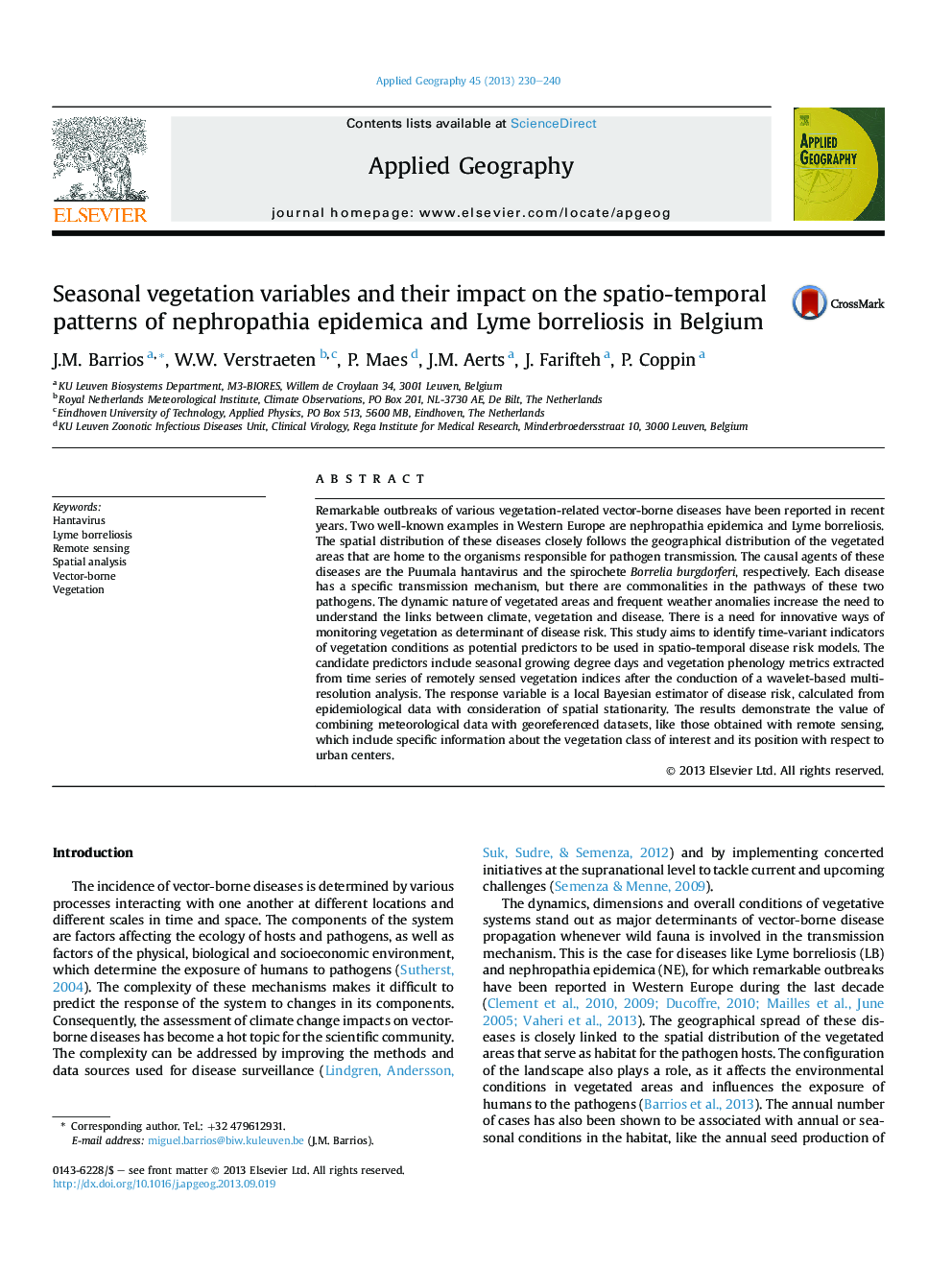| Article ID | Journal | Published Year | Pages | File Type |
|---|---|---|---|---|
| 6538804 | Applied Geography | 2013 | 11 Pages |
Abstract
Remarkable outbreaks of various vegetation-related vector-borne diseases have been reported in recent years. Two well-known examples in Western Europe are nephropathia epidemica and Lyme borreliosis. The spatial distribution of these diseases closely follows the geographical distribution of the vegetated areas that are home to the organisms responsible for pathogen transmission. The causal agents of these diseases are the Puumala hantavirus and the spirochete Borrelia burgdorferi, respectively. Each disease has a specific transmission mechanism, but there are commonalities in the pathways of these two pathogens. The dynamic nature of vegetated areas and frequent weather anomalies increase the need to understand the links between climate, vegetation and disease. There is a need for innovative ways of monitoring vegetation as determinant of disease risk. This study aims to identify time-variant indicators of vegetation conditions as potential predictors to be used in spatio-temporal disease risk models. The candidate predictors include seasonal growing degree days and vegetation phenology metrics extracted from time series of remotely sensed vegetation indices after the conduction of a wavelet-based multiresolution analysis. The response variable is a local Bayesian estimator of disease risk, calculated from epidemiological data with consideration of spatial stationarity. The results demonstrate the value of combining meteorological data with georeferenced datasets, like those obtained with remote sensing, which include specific information about the vegetation class of interest and its position with respect to urban centers.
Related Topics
Life Sciences
Agricultural and Biological Sciences
Forestry
Authors
J.M. Barrios, W.W. Verstraeten, P. Maes, J.M. Aerts, J. Farifteh, P. Coppin,
